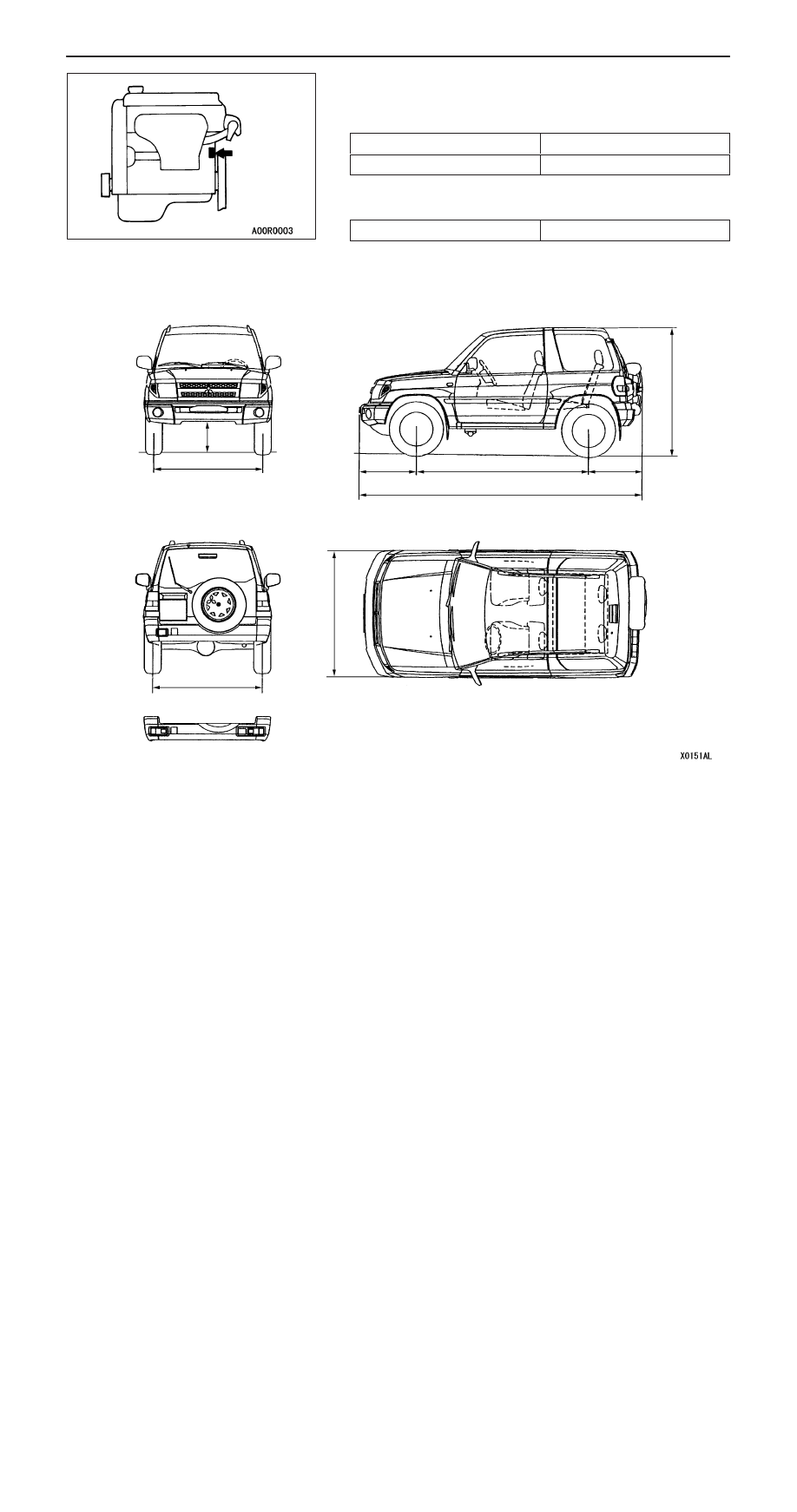Mitsubishi Pajero Pinin. Manual - part 2

GENERAL –
Vehicle Identification/Major Specifications
00-15
ENGINE MODEL NUMBER
1.
The engine model number is stamped on the cylinder
block as shown below.
Engine model
Engine displacement m
ȏ
4G93
1,834
2.
The engine serial number is stamped near the engine
model number.
Engine serial number
AA0201 to YY9999
MAJOR SPECIFICATIONS
2
5
7
9
4
1
8
6
3
<R.H. drive
vehicles>
<L.H. drive
vehicles>